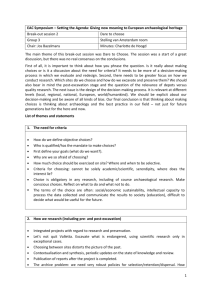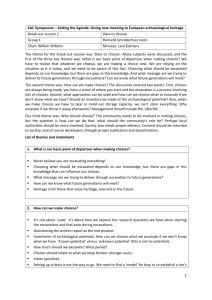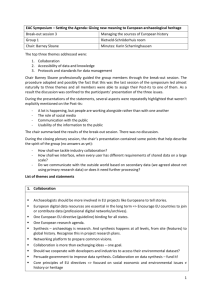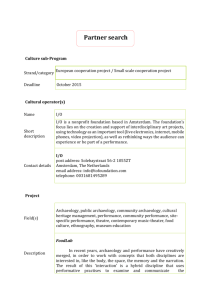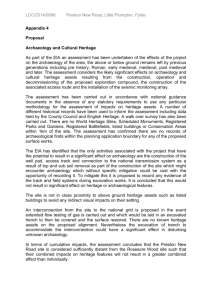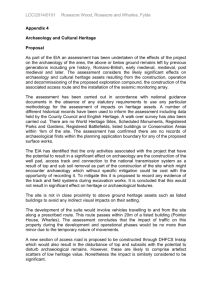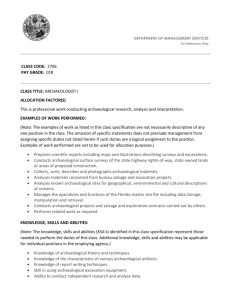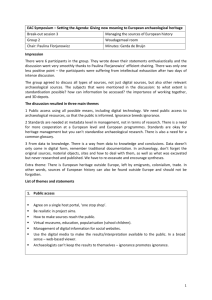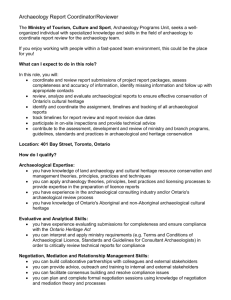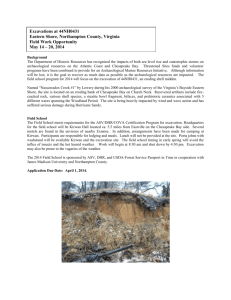Session 2
advertisement
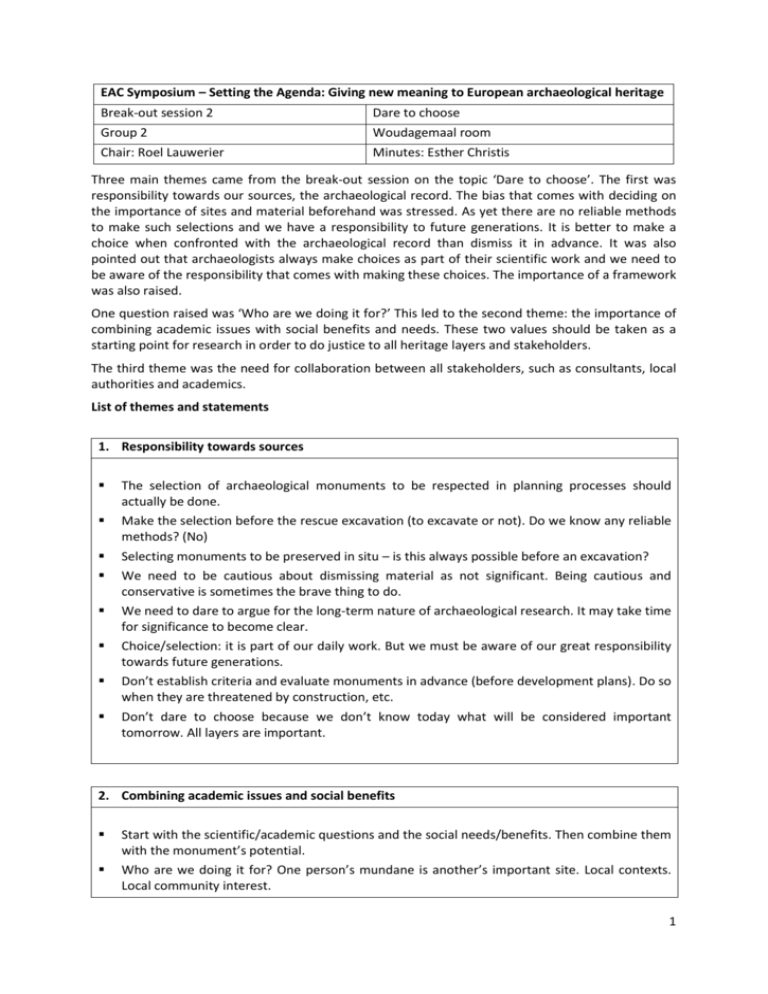
EAC Symposium – Setting the Agenda: Giving new meaning to European archaeological heritage Break-out session 2 Dare to choose Group 2 Woudagemaal room Chair: Roel Lauwerier Minutes: Esther Christis Three main themes came from the break-out session on the topic ‘Dare to choose’. The first was responsibility towards our sources, the archaeological record. The bias that comes with deciding on the importance of sites and material beforehand was stressed. As yet there are no reliable methods to make such selections and we have a responsibility to future generations. It is better to make a choice when confronted with the archaeological record than dismiss it in advance. It was also pointed out that archaeologists always make choices as part of their scientific work and we need to be aware of the responsibility that comes with making these choices. The importance of a framework was also raised. One question raised was ‘Who are we doing it for?’ This led to the second theme: the importance of combining academic issues with social benefits and needs. These two values should be taken as a starting point for research in order to do justice to all heritage layers and stakeholders. The third theme was the need for collaboration between all stakeholders, such as consultants, local authorities and academics. List of themes and statements 1. Responsibility towards sources The selection of archaeological monuments to be respected in planning processes should actually be done. Make the selection before the rescue excavation (to excavate or not). Do we know any reliable methods? (No) Selecting monuments to be preserved in situ – is this always possible before an excavation? We need to be cautious about dismissing material as not significant. Being cautious and conservative is sometimes the brave thing to do. We need to dare to argue for the long-term nature of archaeological research. It may take time for significance to become clear. Choice/selection: it is part of our daily work. But we must be aware of our great responsibility towards future generations. Don’t establish criteria and evaluate monuments in advance (before development plans). Do so when they are threatened by construction, etc. Don’t dare to choose because we don’t know today what will be considered important tomorrow. All layers are important. 2. Combining academic issues and social benefits Start with the scientific/academic questions and the social needs/benefits. Then combine them with the monument’s potential. Who are we doing it for? One person’s mundane is another’s important site. Local contexts. Local community interest. 1 Keep all heritage users and stakeholders in mind and make choices on the basis of all these values. Tell stories better. Will that affect the selection process? Answer research questions. Even for watching-brief work, we need to point out the research aim. We have to be able to say what we are looking/investing for. It sometimes seems that heritage management is a step ahead of academic archaeology. 3. Collaboration If shown to exist, we may have to dare to confront the academic bias against rescue archaeology. Collaboration between academic consultants + national authorities for understanding. Network of academics, heritage + commercial archaeology has to be established at the local/regional level. Discussion on frameworks Dare to choose. Yes, when it comes to sampling and academic investigation, no for excavations. Excavation methods have to be adapted to scientific questions; there is no single technique for every kind of site. The need to choose The belief in total documentation is dangerous. There are always choices being made. We are not independent of the economic cycle. In very specific threatened areas like the brown coal mining in the Rhineland, we are losing approximately 400 ha annually. Only 5% is being researched through rescue excavation. We therefore need a scientific approach to choosing. Dare to not choose between quantity and quality. We have to constantly test our system of choosing and be wary of hobby horses. If you are in charge of decision-making, there is a risk that you will give preference to special periods or types of sites. Are we scientists or just technicians? Archaeologically assisted destruction. Digging holes in the past or planning archaeology. Can we do more with less? Application of scientific techniques. Better understanding of site 2 taphonomy. Targeted research appropriate to context and local interest. Other statements Informing and educating industrial companies. Special archaeological education of the local people (village/municipality). Consider some isolated finds + sources of raw material + in situ archaeological sites as one big archaeological site/complex in the region. Be kinder across sectors. Most of us are doing our best in the profession. 3


